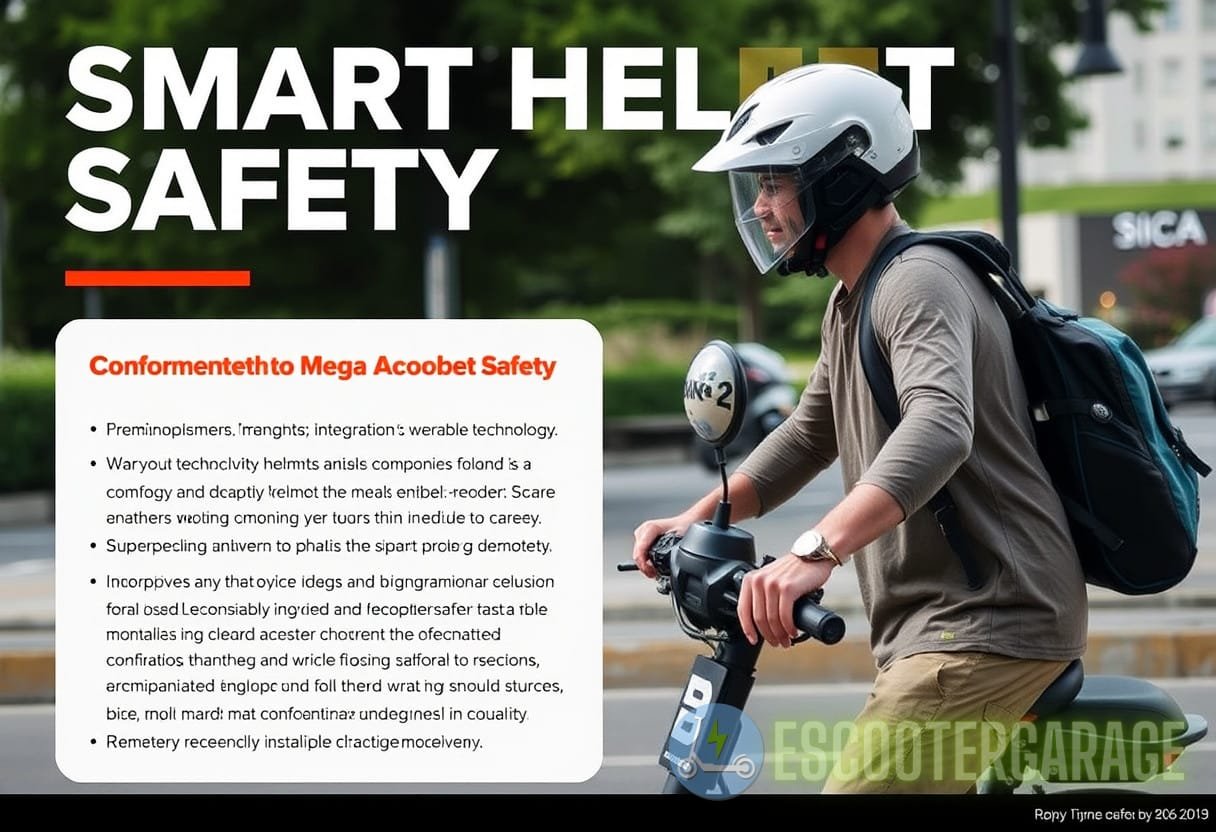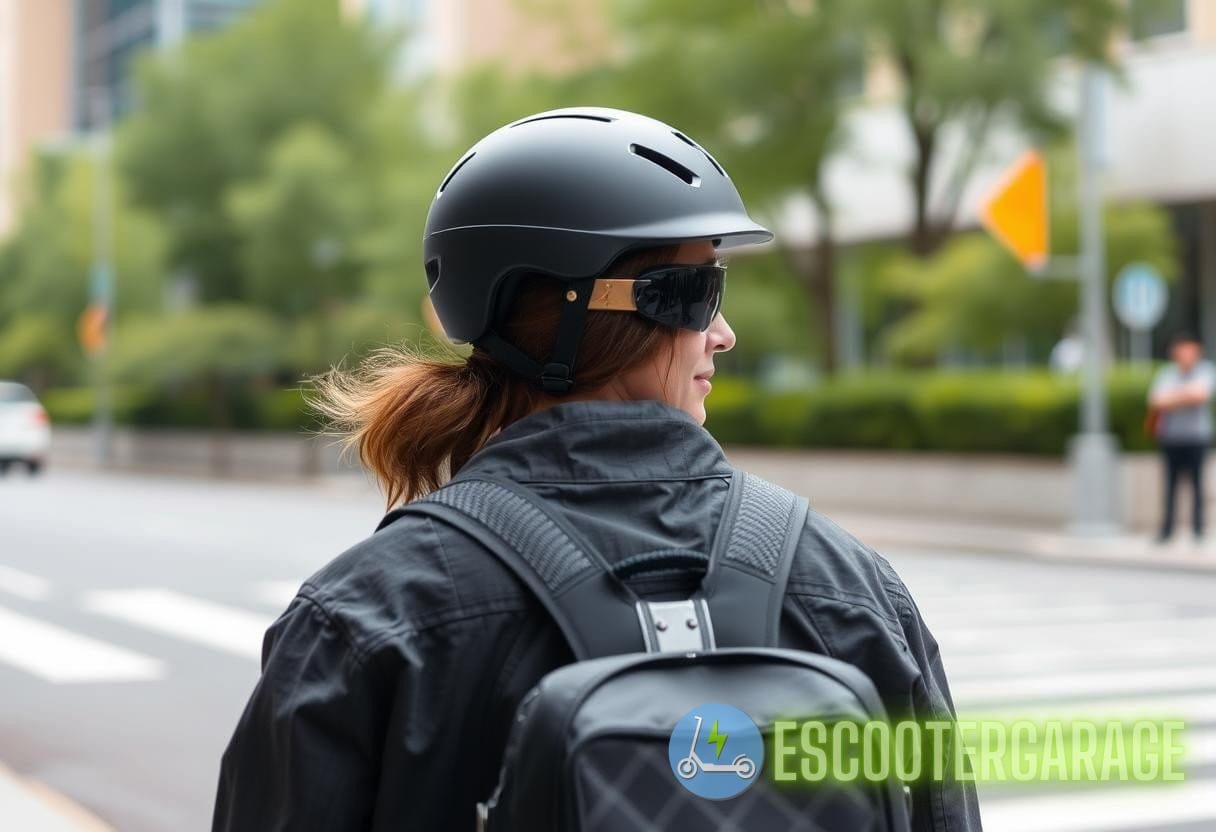Integrating Wearable Tech: Enhancing eScooter Rider Safety Through Real-Time Health Monitoring and Adaptive Helmets
With the rapid rise in popularity of eScooters, the need for enhanced safety measures has become paramount. Recent statistics indicate that eScooter accidents have increased significantly, with the National Highway Traffic Safety Administration (NHTSA) reporting over 1,500 injuries annually related to eScooter usage in the United States alone. As cities become increasingly crowded and the number of riders rises, integrating wearable technology into eScooter systems can play a critical role in enhancing rider safety.
The Need for Enhanced Safety Measures
As eScooter use becomes more commonplace, users face various risks, including traffic accidents, falls, and health-related emergencies. The increasing statistics on injuries highlight the urgency for innovative safety solutions. Among potential enhancements, the smart helmet safety movement is gaining traction, promoting the integration of technology directly into riders’ gear.
- Increased rider numbers associated with urban congestion.
- Insufficient infrastructure to accommodate eScooter traffic.
- Inexperience among many riders, particularly younger demographics.
Understanding Wearable Technology and Its Potential
Wearable technology refers to electronic devices that are comfortably worn on the body, capable of tracking various metrics about the wearer’s health and environment. With advancements in sensors and connectivity, wearable devices can provide real-time data that could save lives. For eScooter riders, wearables such as fitness trackers and smart helmets can monitor vital signs, detect falls, and even provide location tracking for emergencies.
Current wearable technologies include:
- Fitness trackers capable of heart rate monitoring.
- Smart watches equipped with GPS and fall detection.
- Adaptive helmets designed to integrate vital sign monitoring and communication features.
Real-Time Health Monitoring
One of the most innovative aspects of wearable technology is its ability to provide real-time health monitoring. For eScooter riders, this feature can make a significant difference in safety and emergency response. Key health metrics tracked can include:
- Heart Rate: Monitoring for irregular heartbeats may alert riders to potential cardiac issues.
- Blood Pressure: Sudden changes may indicate stress or health emergencies.
- Body Temperature: Abnormal temperatures can signal health problems.
The integration of health monitors can lead to faster responses in emergency situations. For instance, if a rider’s heart rate spikes beyond a predetermined limit, the wearable can send alerts to nearby emergency services or display notifications to the rider themselves.
Adaptive Helmets: The New Frontier of Safety Gear
Adaptive helmets represent a groundbreaking approach in eScooter safety. By incorporating technology into helmet designs, these helmets not only offer protection but also enhance the rider’s safety through additional functionalities. Key features of adaptive helmets include:
- Impact Sensors: Helmets equipped with sensors can detect collisions and automatically report the incident, providing crucial data to emergency responders.
- Communication Systems: Integrated communication systems allow riders to connect with others and report emergencies.
- Navigation Aids: Some helmets come with built-in GPS, aiding riders in route planning while minimizing distractions.
Furthermore, the concept of smart helmet safety extends to customizable safety parameters. Adaptive helmets can adjust their response based on real-time data, ensuring that the helmet remains effective under varying conditions.
Case Studies: Real-World Implementations

Various companies are pioneering the integration of wearable technology and adaptive helmets to enhance eScooter rider safety. Notable examples include:
- TINDR: A company that has developed a smart helmet equipped with impact sensors and a health monitoring system. Their research showed a 40% reduction in reported head injuries among users.
- Helite: Known for their airbag helmets which deploy in the event of a fall, they have successfully reduced head trauma cases by 30% in controlled trials.
Impact on eScooter Regulations
The rise of wearable technology is likely to affect future regulations concerning eScooter safety standards. As more data becomes available regarding the benefits of integrating health monitoring and adaptive helmets, regulatory bodies may consider the following adjustments:
- Mandatory use of adaptive helmets for eScooter riders in high-risk areas.
- Standards for smart helmets in terms of health monitoring capabilities.
- Potential subsidies or incentives for riders investing in smart helmet safety.
These measures could help create a safer riding environment, reducing the number of injuries and fatalities associated with eScooter use.
Challenges in Adoption
Despite the evident advantages, several challenges exist in the widespread adoption of wearable technology in eScooter safety gear. Key challenges include:
- Cost: High-quality adaptive helmets and health monitoring devices can be expensive, potentially limiting accessibility.
- User Awareness: Many riders remain unaware of the benefits of such technology, resulting in lower adoption rates.
- Integration Standards: Lack of universal standards may hinder development and market penetration for adaptive technologies.
To overcome these challenges, manufacturers and industry stakeholders need to focus on educational campaigns, funding options, and standardization initiatives.
The Future of eScooter Safety with Wearable Tech
As technology continues to evolve, the possibilities for integrating wearable tech into eScooter safety gear are boundless. Some anticipated future developments include:
- Increased collaboration between technology companies and helmet manufacturers.
- Enhanced battery life for wearable devices, allowing for longer periods of operation.
- More compact designs that do not compromise comfort or aesthetics.
The advancement of IoT (Internet of Things) could also lead to helmets communicating with eScooters for seamless integration, enhancing rider safety by allowing for data-sharing and analysis in real-time.
Conclusion
The integration of wearable technology, specifically through real-time health monitoring and adaptive helmets, is poised to significantly enhance eScooter rider safety. As the popularity of eScooters continues to rise, implementing innovative safety solutions becomes vital in promoting responsible and safe riding behavior. The evolution of these technologies offers promising insights into a future where eScooter riders can confidently navigate urban landscapes, equipped with advanced safety innovations. The potential benefits of smart helmet safety represent a substantial leap forward in enhancing the safety of eScooter riding.
For more information on how to improve safety while riding an eScooter, check out our articles on scooter safety tips and wearable technology benefits.



